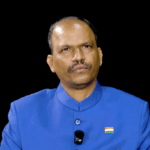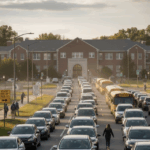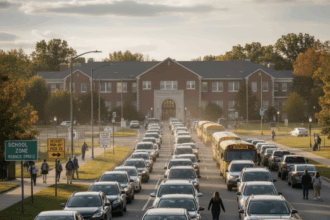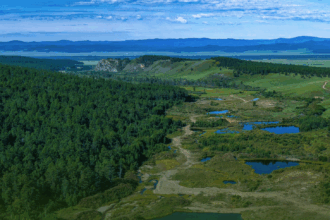Although Mongolia is three times bigger than France in terms of territory, our population is only three million people divided into 21 provinces and one capital city. Given that half of the population lives in the capital, it is time to thoroughly discuss how to carry out regional development in our country with equity and make smart decisions.
If the current trend keeps up, and people keep moving from rural locations to urban areas, from soums to aimag centers, and from aimags to the capital, who will live in the countryside, take care of the vast land, and continue the animal husbandry that is the core of Mongolia’s nomadic culture?
Due to urbanization taking place globally, Mongolia’s younger generation increasingly prefers to stay close to and live in urban settlements instead of pursuing herding and farming. In other countries people do not flock to a single city, because their regional towns are well developed and have their own identities and special features.
Could Mongolia have three large hubs: western, central, and eastern? Could every aimag be a unique center of their respective region? How can the full potential of regional development be achieved? What is the best economic policy to implement? Why is the role of the younger generation crucial?
REGIONAL DEVELOPMENT POLICY
The Economic Policy and Competitiveness Research Center recently published its 4th annual report on aimag competitiveness. Aimags were ranked after processing data covering 180 parameters, two thirds of which were statistical calculations and the rest came from surveys. The ranking was done with the general competitiveness index (aimag GDP per capita, unemployment rate, inflation rate, etc.) and four major indicators (economic performance, governance efficiency, business efficiency, and infrastructure). It appears that Orkhon Province led the list, followed by Dundgovi in 2015. More information can be found at aimagindex.mn.
This report provides us with a general picture we can zoom in on to look at the nation’s economic conditions, business environment, and the employment levels of aimags to make comparisons. However, it does not show us what products produced in which aimags are competitive in their industry, or which are capable of entering the international market. But it should be noted that this analysis is not the objective of this report in the first place.
We call a business competitive when it exports its products abroad after meeting domestic demand. Only such companies can make an aimag or a region competitive and ensure a sustainable economy. Otherwise, at this time when commodity prices continue to fall, we can see that extracting and exporting resources brings about only short-term achievement.
In order to make aimags competitive, Mongolia’s tax policy needs to go through a structural change. History tells us that regions cannot achieve development without giving aimags and towns the right to set local tax rates, collect those taxes, and decide for themselves how to spend local tax revenue.
Up to 40 percent of tax revenue and expenditures such as healthcare, pensions, and social welfare should be governed locally by aimags. Only then will aimags be able to develop and will we see people choosing to live there permanently.
Local tax governance would also allow for competition between aimags. In order to create jobs, aimags should start implementing good policies, such as those directed at reducing the amount of taxes they govern to ensure that as many businesses as possible are set up in their community. Also, aimags should be able to establish specific, competitive industrial clusters.
BAGS ARE THE CORE OF REGIONAL DEVELOPMENT
The underlying reason why herders are moving away from the countryside is associated with property regulations.Besides their livestock, herders need to be able to own their winter camp locations, and share pastures with other households in their bag (a bag is the smallest regional administrative unit in Mongolia). The more cooperation the bag households have, the greater labor productivity they will achieve. It will increase their profits, improve livelihoods, bring development to regions, and ultimately, to the nation as a whole.
Other pastures should be governed by the bag. This way, bag households could start fixing their water wells together and coming up with the best ways to use pastures. Their labor productivity and income will increase only when they work together in building fences, collecting hay, and preparing and selling meat and dairy products. When livelihoods improve, the people living in the countryside will have a lesser need to relocate to urban areas.
A similar movement in South Korea, called the New Community Movement (Sae Maul Undong), changed Korea’s rural areas completely. Today, Mongolian herder households each own a satellite antenna and a mobile phone. This is a great advantage in comparison to what Koreans had in 1960. We need to do the research and establish a New Community Movement here in Mongolia, and establish a government policy to develop community businesses, encourage competition, and allow new regulations for land relations.
THE ROLE OF THE YOUNGER GENERATION
The younger generation is the wealth and future of a nation. It is essential to develop the younger generation into independent, responsible citizens with a positive mindset. Countries have a specific policy on their younger generation. Such policies focus on developing young people, educating them, providing them with a safe environment to live and work in, and ensuring healthcare wherever they may reside – be it in urban or rural areas.
The Government of Mongolia has cooperated with the United Nations Population Fund and other donor countries to develop the Youth Development Program. Under this program, 16 youth development centers and 27 clinics for youth have been established in the countryside(http://countryoffice.unfpa.org/mongolia/). These clinics are equipped with technical resources and trained personnel. The clinics provide young people with health advice, diagnostics, and treatment services, and improve their skills to live a healthy life. As needed, they provide professional, confidential, and high-quality medical services.
JCI Mongolia has recently published a countryside hospitality index and compared it to Ulaanbaatar’s. The average hospitality of Ulaanbaatar residents was ranked 3.2 compared to the 3.8 ranking of countryside residents. The index shows that the people of the countryside are more hospitable and friendly than the dwellers of the capital city. Our younger generation can play an important role in taking advantage of the special qualities of the countryside, creating a value chain of goods and services, meet domestic demand, and potentially expand to international markets.They can do it because half of Mongolia’s population is under 30 years old and are the people who are best at using information and communications technology. Mongolians have a great opportunity to use smart technology to improve our productivity. Our countryside has great potential for development, and we need to make the best out of it.
2016.04.13












